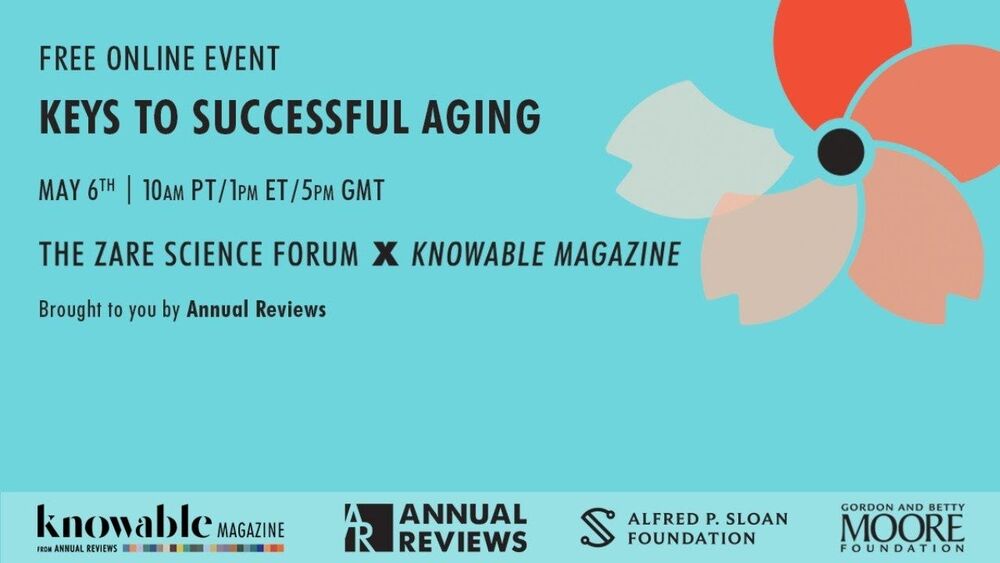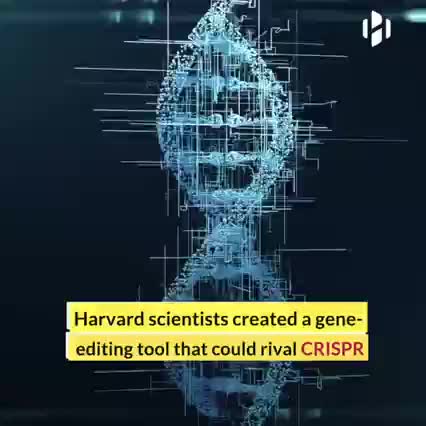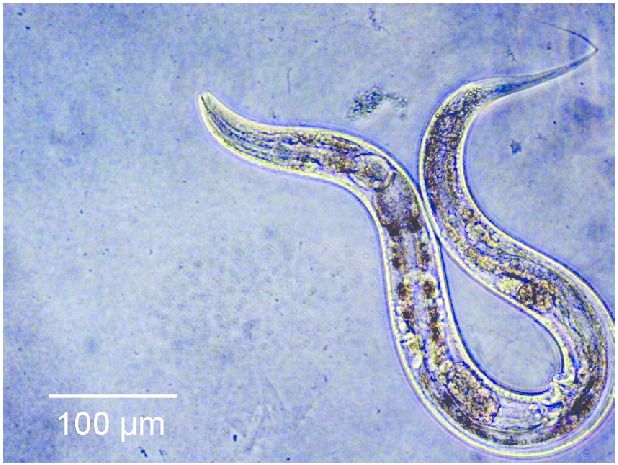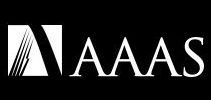Archive for the ‘genetics’ category: Page 262
May 21, 2021
Scientists use genetic engineering to increase worm’s lifespan
Posted by Joe Bennett in categories: bioengineering, biotech/medical, evolution, genetics, life extension
To answer this question, an internal team of scientists, consisting of researchers affiliated with the Buck Institute for Research on Ageing, and researchers from Nanjing University decided to modify both the Insulin and the rapamycin pathways of a group of C.elegans worms, expecting to see a cumulative result of a 130% increase in lifespan. However, instead of seeing a cumulative effect in lifespan, the worms lived five times longer than they normally would.
“The synergistic extension is really wild. The effect isn’t one plus one equals two, it’s one plus one equals five. Our findings demonstrate that nothing in nature exists in a vacuum; in order to develop the most effective anti-aging treatments we have to look at longevity networks rather than individual pathways.” – Jarad Rollins of Nanjing University.
What could this mean for human regenerative medicine? Humans are not worms, however on a cellular level they do possess very similar biology. Both the insulin pathway and the rapamycin pathway are what is known as ‘conserved’ between humans and C.elegans, meaning that these pathways have been maintained in both organisms. In the distant past, both humans and C.elegans had a common ancestor, in exactly the same way as humans and Chimpanzees have a common ancestor. Evolution has changed our bodies significantly over the millions of years that humans and C.elegans have diverged from one another, but a lot of our fundamental biological functions remain largely unchanged.
May 21, 2021
Genetic tricks of the longest-lived animals
Posted by Jason Blain in categories: biotech/medical, genetics, life extension

The secret to longevity is already in the animals around us.
Some species live unexpectedly long lives. By studying how they do it, researchers hope to pinpoint factors affecting human longevity.
Continue reading “Genetic tricks of the longest-lived animals” »
May 21, 2021
Fighting Aging With Gene Therapies | Liz Parrish Interview Series Episode 2
Posted by Montie Adkins in categories: education, genetics, law, life extension, media & arts

Most important part comes at 1:49 where Liza talks about gene therapies for people to stop people from aging, reaching homeostasis, or even exceeding it a little bit.
In this video Liz introduces BioViva Science and how the company works with its partners in delivering gene therapies.
Continue reading “Fighting Aging With Gene Therapies | Liz Parrish Interview Series Episode 2” »
May 21, 2021
Are mouse models relevant to Human regenerative medicine?
Posted by Joe Bennett in categories: bioengineering, biotech/medical, cyborgs, genetics, life extension
To begin with, why do we use mice in medical and biological research? The answer to this question is fairly straight forward. Mice are cheap, they grow quickly, and the public rarely object to experimentations involving mice. However, mice offer something that is far more important than simple pragmatism, as despite being significantly smaller and externally dissimilar to humans, our two species share an awful lot of similarities. Almost every gene found within mice share functions with genes found within humans, with many genes being essentially identical (with the obvious exception of genetic variation found within all species). This means that anatomically mice are remarkably similar to humans.
Now, this is where for the sake of clarity it would be best to break down biomedical research into two categories. Physiological research and pharmaceutical research, as the success of the mouse model should probably be judges separately depending upon the research that is being carried out. Separating the question of the usefulness of the mouse model down into these two categories also solves the function of more accurately focusing the ire of its critics.
The usefulness of the mouse model in the field of physiological research is largely unquestioned at this point. We have quite literally filled entire textbooks with the information we have gained from studying mice, especially in the field of genetics and pathology. The similarities between humans and mice are so prevalent that it is in fact possible to create functioning human/mouse hybrids, known as ‘genetically engineered mouse models’ or ‘GEMMs’. Essentially, GEMMs are mice that have had the mouse version of a particular gene replaced with its human equivalent. This is an exceptionally powerful tool for medical research, and has led to numerous medical breakthroughs, including most notably our current treatment of acute promyelocytic leukaemia (APL), which was created using GEMMs.
May 21, 2021
CRISPR Editing in Primates
Posted by Kiran Manam in categories: bioengineering, biotech/medical, business, genetics
There’s some really interesting CRISPR news out today, and it’s likely to be a forerunner of much more news to come. A research team has demonstrated what looks like robust, long-lasting effects in a primate model after one injection of the CRISPR enzymatic machinery. There have been plenty of rodent reports on various forms of CRISPR, and there are some human trials underway, but these is the first primate numbers that I’m aware of.
The gene they chose to inactivate is PCSK9, which has been a hot topic in drug discovery for some years now. It’s a target validated by several converging lines of evidence from the human population (see the “History” section of that first link). People with overactive PCSK9 have high LDL lipoproteins and cholesterol, and people with mutations that make it inactive have extremely low LDL and seem to be protected from a lot of cardiovascular disease. There are several drugs and drug candidates out there targeting the protein, as well there might be.
It’s a good proof-of-concept, then, because we know exactly what the effects of turning down the expression of active PCSK9 should look like. It’s also got the major advantage of being mostly a liver target – as I’ve mentioned several times on the blog already, many therapies aimed at gene editing or RNA manipulation have a pharmacokinetic complication. The formulations used to get such agents intact into the body (and in a form that they can penetrate cells) tend to get combed out pretty thoroughly by the liver – which after all, is (among other things) in the business of policing the bloodstream for weird, unrecognized stuff that is then targeted for demolition by hepatocytes. Your entire bloodstream goes sluicing through the liver constantly; you’re not going to able to dodge it if your therapy is out there in the circulation. It happens to our small-molecule drugs all the time: hepatic “first pass” metabolism is almost always a factor to reckon with.
May 19, 2021
Kate Adamala (U of M) 1: Synthetic Cells: Building Life to Understand It
Posted by Jose Ruben Rodriguez Fuentes in categories: alien life, engineering, evolution, genetics

Dr. Kate Adamala describes what synthetic cells are and how they can teach us the fundamental principles of life.
Continue reading “Kate Adamala (U of M) 1: Synthetic Cells: Building Life to Understand It” »
May 17, 2021
‘Neurons on a chip’ reveal patterns across autism-linked conditions
Posted by Jason Blain in categories: genetics, neuroscience
And cells from people with mutations in KMT2D, which results in Kabuki syndrome, showed similar patterns of activity to the EHMT1 cells. Kabuki syndrome often results in intellectual disability but is not typically linked to autism.
Cells that carry mutations in ARID1B showed a distinct pattern of network activity, with short, small bursts occurring at an unusually high rate.
Moving forward, Nadif Kasri and his colleagues plan to test other genes that increase a person’s likelihood of being autistic. They also plan to explore how these activity patterns compare at the individual level, and how they relate to other autism-linked traits, he says.
May 16, 2021
International research team argues for combining organic farming and genetic engineering
Posted by Jason Blain in categories: bioengineering, biotech/medical, food, genetics, health
“Gene editing offers unique opportunities to make food production more sustainable and to further improve the quality, but also the safety, of food. With the help of these new molecular tools, more robust plants can be developed that deliver high yields for high-quality nutrition, even with less fertiliser,” says co-author Stephan Clemens, Professor of Plant Physiology at the University of Bayreuth and founding Dean of the new Faculty of Life Sciences: Food, Nutrition & Health on the Kulmbach campus.
For more sustainability on a global level, EU legislation should be changed to allow the use of gene editing in organic farming. This is what an international research team involving the Universities of Bayreuth and Göttingen demands in a paper published in the journal “Trends in Plant Science”.
In May 2020, the EU Commission presented its “Farm-to-Fork” strategy, which is part of the “European Green Deal”. The aim is to make European agriculture and its food system more sustainable. In particular, the proportion of organic farming in the EU’s total agricultural land is to be increased to 25 percent by 2030. However, if current EU legislation remains in place, this increase will by no means guarantee more sustainability, as the current study by scientists from Bayreuth, Göttingen, Düsseldorf, Heidelberg, Wageningen, Alnarp, and Berkeley shows.
May 16, 2021
Genetically engineered grass cleanses soil of toxic pollutants left
Posted by Jason Blain in categories: biotech/medical, chemistry, genetics, military
Large swaths of U.S. military land are covered with munitions components, including the explosive chemical RDX. This molecule is toxic to people and can cause cancer. It also doesn’t naturally break down and can contaminate groundwater. Now researchers have genetically engineered a grass commonly used to fight soil erosion so that it can remove RDX from the soil, according to a new paper published May 3 in Nature Biotechnology.
A team, which includes researchers from the University of Washington, demonstrated that over the course of three years, a genetically engineered switchgrass could break down an explosive chemical in…













